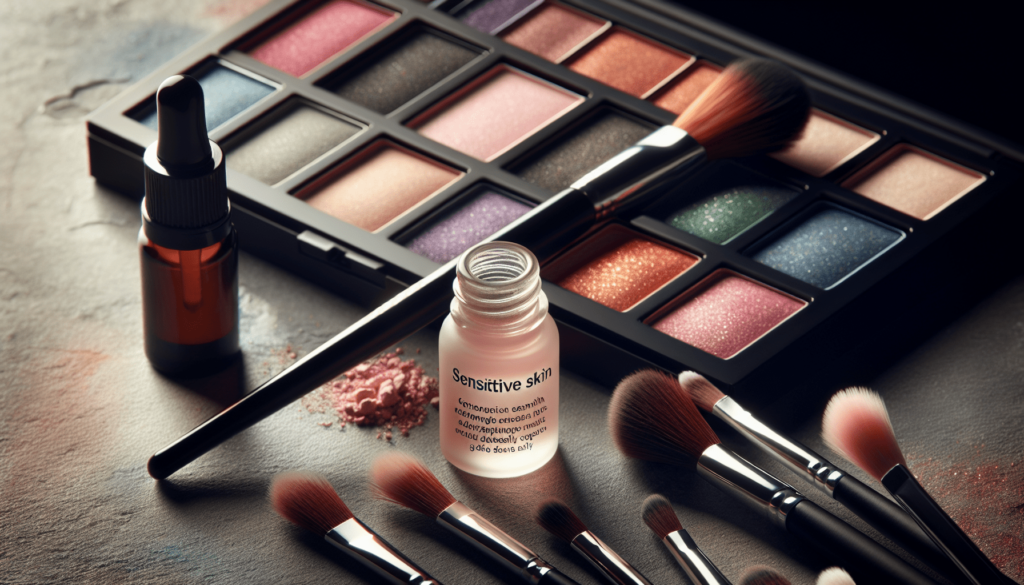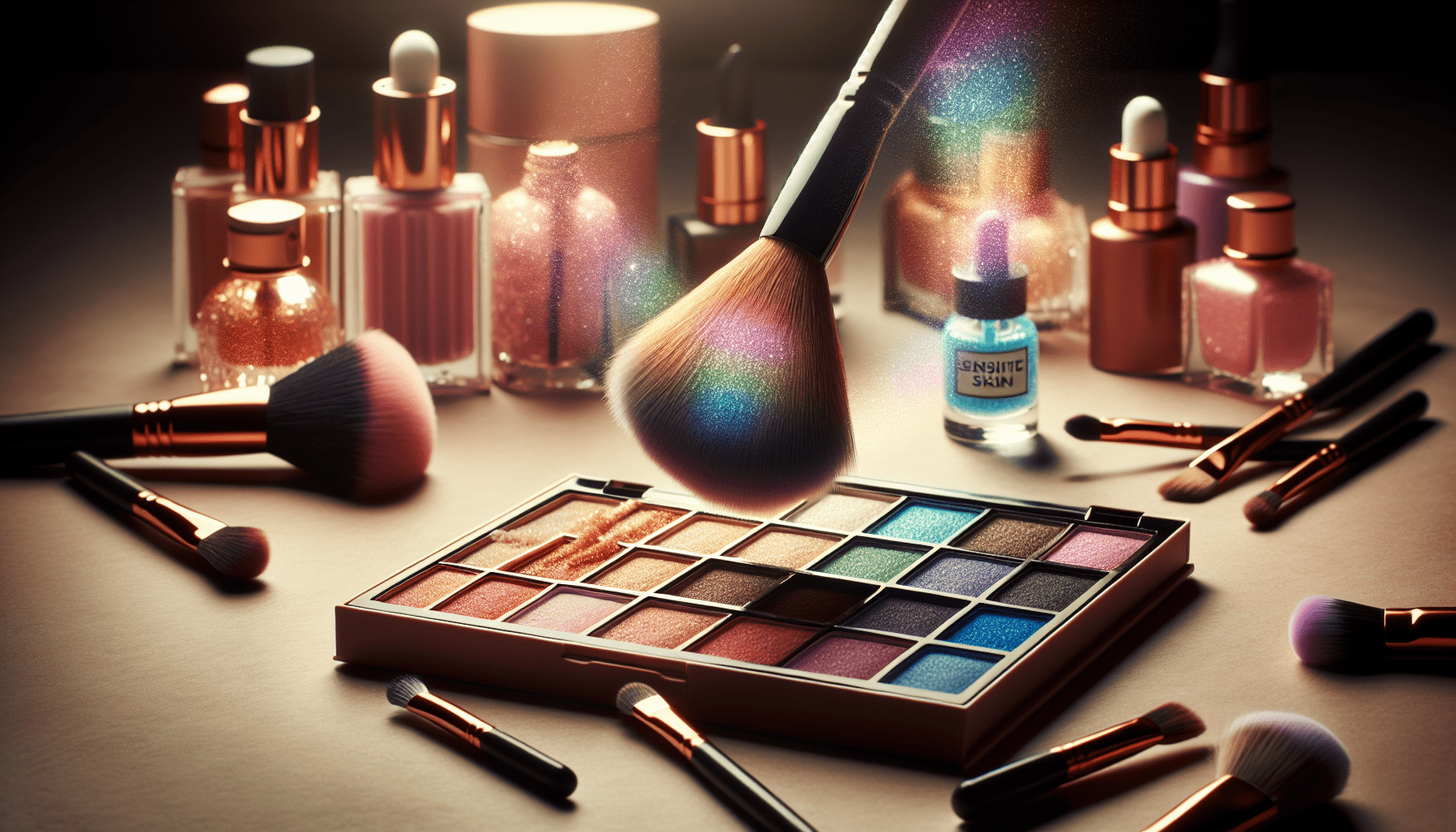Have you ever experienced an unexpected skin reaction after trying a new cosmetic product? It might have happened with a foundation, a lipstick, or even a moisturizer. Such experiences can be frustrating, painful, and worrying, especially when you are not quite sure what triggered the reaction. In this article, we’ll discuss ways to manage allergic reactions to cosmetics—so you can enjoy your beauty routine without unnecessary stress.

Understanding Cosmetic Allergies
What Are Cosmetic Allergies?
Cosmetic allergies occur when your skin reacts negatively to specific ingredients found in beauty products. The reactions can vary from mild irritation to severe allergic responses. This type of allergy is relatively common and can affect anyone, regardless of age or skin type.
Symptoms to Watch For
Symptoms of cosmetic allergies can differ widely but typically include:
| Symptom | Description |
|---|---|
| Redness | Areas of the skin appear red and inflamed. |
| Itching | Persistent itching in the affected area. |
| Swelling | Swelling, especially around the eyes, lips, or other sensitive parts. |
| Burning Sensation | A feeling of burning in the area where the product was applied. |
| Blisters | In severe cases, tiny blisters may appear, leading to further discomfort. |
| Dry, Flaky Skin | The skin may become dry, flaky, or develop a rough texture. |
Recognizing these symptoms early can help you act swiftly to minimize the impact.
Identifying the Culprit Ingredients
Common Allergens in Cosmetics
Certain ingredients are more likely to cause allergic reactions. Being aware of these can help you make informed choices:
| Ingredient | Commonly Found In | Potential Effects on Skin |
|---|---|---|
| Fragrances | Perfumes, creams | Redness, itching, dermatitis |
| Preservatives | Lotions, shampoos | Irritation, swelling, allergic derm. |
| Colorants | Makeup, hair dye | Rashes, blisters, dermatitis |
| Formaldehyde | Nail polish, hair prod. | Itching, blistering, dermatitis |
| Parabens | Moisturizers, makeup | Dryness, flaking, irritation |
Knowing these common allergens can help you avoid products likely to cause a reaction.
Conducting Patch Tests
One effective way to identify if a product is suitable for your skin is by conducting patch tests. Apply a small amount of the product on a discreet area of your skin, like behind your ear or on your wrist. Observe the area for 24-48 hours. If no adverse reaction occurs, the product is likely safe for use on a larger area.
Managing an Allergic Reaction
Immediate Actions to Take
If you suspect a reaction to a cosmetic product:
- Stop Using the Product: Discontinue use immediately to prevent further irritation.
- Cleanse the Area: Gently wash the affected area with lukewarm water and a mild, fragrance-free cleanser.
- Apply a Cold Compress: Use a cold, damp cloth to reduce swelling and soothe irritation.
Over-the-Counter Treatments
Numerous over-the-counter options can help alleviate symptoms:
| Treatment | Usefulness |
|---|---|
| Hydrocortisone Cream | Reduces inflammation and itching |
| Antihistamine Tablets | Relieves itching and other allergic symptoms |
| Calamine Lotion | Soothes itchy and inflamed skin |
| Moisturizers | Helps restore skin moisture and barrier |
These treatments can offer relief while your skin heals.
When to See a Doctor
Not all reactions can be managed at home. Seek medical help if you experience:
- Severe Swelling: Particularly around the eyes or lips.
- Difficulty Breathing: This could indicate a more severe allergic reaction.
- Persistent Symptoms: If symptoms last more than a few days despite treatment.
- Infection Signs: Increased redness, warmth, pus, or fever.
Your doctor can provide stronger medications or recommend further tests to diagnose the underlying cause.
Preventative Measures
Reading Labels and Ingredients
Make it a habit to read product labels and ingredient lists. Avoid products containing known allergens or irritants for you. Opt for those labeled “hypoallergenic” or “suitable for sensitive skin.”
Simplifying Your Routine
Using fewer products limits your exposure to potential allergens. Stick to the basics: cleanser, moisturizer, and sunscreen. Introduce new products one at a time so you can easily identify the cause if a reaction occurs.
Choosing Quality Over Quantity
Investing in high-quality, dermatologist-recommended products can often be more beneficial than using a variety of budget options that may contain irritants.

Natural Alternatives
Benefits of Natural Ingredients
Natural ingredients can often be gentler on the skin. Examples include:
- Aloe Vera: Soothes and hydrates
- Chamomile: Calms irritation
- Coconut Oil: Moisturizes and has antibacterial properties
DIY Cosmetic Options
Creating your own skincare products can ensure you know exactly what goes into them. Simple recipes for face masks, scrubs, and moisturizers can be found online using basic ingredients like honey, oats, and yogurt.
Psychological Impact and Support
Emotional Stress from Skin Issues
A cosmetic allergy doesn’t just affect your skin—it can affect your confidence and emotional well-being. It’s entirely normal to feel upset, embarrassed, or frustrated.
Seeking Support
Talking to friends, joining support groups, or seeking advice from skincare professionals can provide emotional relief. Remember, you’re not alone, and others can offer valuable advice and encouragement.
Conclusion
Managing allergic reactions to cosmetics requires both awareness and proactive steps. By understanding common allergens, conducting patch tests, and choosing products wisely, you can significantly reduce your risk. Should a reaction occur, immediate actions and appropriate treatments can help you quickly get back to feeling your best. Remember, your skin is unique, and what works for someone else might not work for you. With a little patience and attention to detail, you can enjoy a safer, more enjoyable beauty routine.
